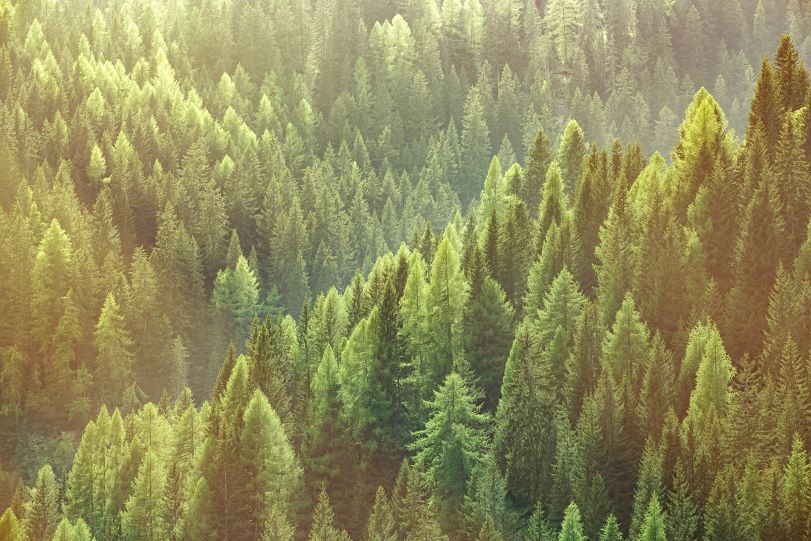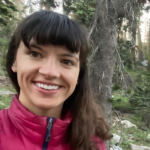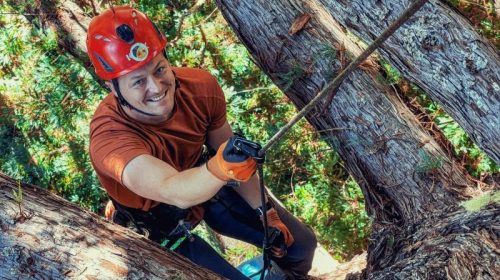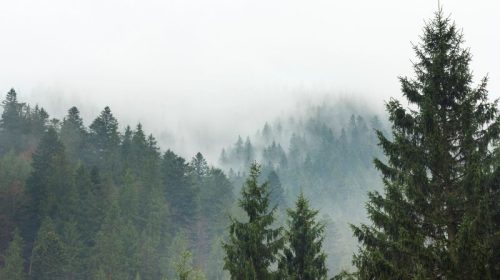California’s Questionable Approach To Fire Mitigation
By Jessica Keating
This story explores the interconnections between fire, native plant species, policy, and fire prevention.
The heat, smoke, and soil disruption following fire act as a catalyst to certain plant species which are referred to as ‘fire-following.’ Some of these plant species, such as native wildflowers, bring beauty and awe to our region. These flowers teach us that beauty can sprout from ashes and serve as a reminder that nature’s resilience comes from its diversity of approaches.
Not all fire-following plants bring beauty and some don’t belong in the regions they grow. The heavily disturbed land left in the wake of a fire creates a condition that allows non-native grasses to outcompete native plants for resources. These non-native grasses hold little moisture, are readily combustible, and have been shown to increase fire-frequency by as much as 150% in the continental US (Fusco, 2019). This phenomenon of increasingly flammable material moving in after a burn puts California’s fire mitigation strategies in question which is an important focal point as California heads into fire season.
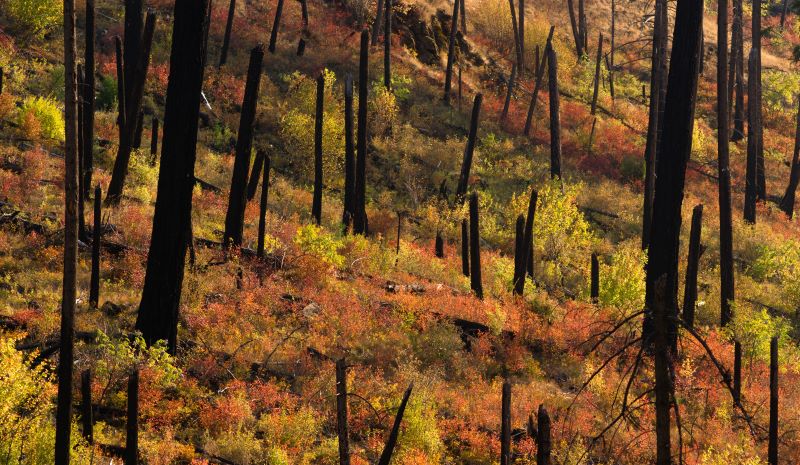
Those who look through California’s Wildfire And Forest Resilience Action Plan, which was released in 2021 and includes the state’s action plan through 2025, will see that California plans to mitigate fire risk and damage by radically increasing the amount of prescribed burns and the amount of trees chopped down via ‘sustainable’ timber harvesting. California plans to monetize this action by giving the harvested wood a label of sustainability which will allow it to be traded at a premium. This industry has been around since 1994 and has been found guilty of an array of exploitative practices that its founding principles claim to stand against (Price et al., 2020). Similar to the fossil fuel industry, this industry is heavily reliant on government subsidies and tax breaks which intervene with market forces to keep the industry afloat.
The talking point used to defend the practice of prescribed burns has been to compare this action with Native Americans who were known to use fire as a tool. On the surface this logic-link seems reasonable and borderline inspiring, but when you dig deeper, the evidence suggests that Native Americans used fire to ready the soil to plant food and other targeted activities which is very different from the widespread burning which is being conducted in California (Baker & Bevington, 2022). This form of false equivalence is deceitful and disrespectful to native people.
Within current discussions about fire prevention, trees are often referred to as ‘fuel.’ While it is true that wildfires can burn trees as fuel, under normal conditions trees do not behave in a manner that readily invites flames, unlike actual fuel, such as a bottle of kerosene. The link created between trees and fuels is made, in part, to support the widespread logging occurring across California that has been renamed forest thinning. The narrative that has been circulated is that less trees means less fuel, which means less fire risk, and improved ease of controlling fires once they ignite.
You do not need to be a forestry or fire expert to question the effectiveness of forest thinning as a method of fire prevention. To build a fire you need dry material, you need heat and low humidity, and you need oxygen flow. A trick for making a fire burn bigger is to blow on it with a concentrated stream of air which results in an instant increase in the intensity of the fire. The ability for airflow to impact fire intensity is why weather, particularly wind, plays a significant role in fire activity.
The practice of tree removal via forest thinning reduces the density of the tree canopy which creates pockets of airflow that can, in the presence of fire, provide the direct airflow needed to stoke a fire bigger. While logging and biomass companies benefit from this practice, the fact that some of the biggest fires of the past 10 years (such as the Dixie fire of 2021, the Camp fire of 2018, and the Bootleg fire of 2021) have occurred in regions that, prior to the fire, had previously undergone extensive tree clearing in the name of reduced fire risk (Hanson, 2024) provide evidence to the overall effectiveness of this strategy.
Similar to the murkiness surrounding sustainable timber harvesting, when prescribed burning is closely examined questions arise about its widespread implementation. For example, researchers using longer time periods in their analysis found that overall, the forested areas that are least likely to burn are the ones that have been longest left unburned. While researchers did observe a short period of reduced fire risk in areas that underwent prescribed burning, the caveat to this finding was that after the brief window of decreased fire risk, the area typically grew back denser and taller than before the burn, which increased the inherent flammability of the area due to the increased presence of low lying material (Gill and Zylstra, 2005; Zylstra, 2023). This finding was consistent with those of other research groups (Cochrane et al., 1999; Taylor et al., 2014; Dixon et al., 2018; and Zylstra, 2018).
A team of researchers at Berkeley explored the period of reduced fire risk following a prescribed burn and found that wildfires can re-occur in previously burned areas as soon as 8-months after an initial fire (Stephans & Moghadass, 2005). When considering the costs paid to air quality and ecological health, the limited time window of decreased fire risk achieved from the practice of prescribed burning seems like a poor return on investment. If we were to implement this 8-month time scale into the regularity of our prescribed burn cycles we would forget what it’s like to breathe clean air.
Science and logic tell us that we cannot prevent fires like we cannot prevent rain. Unlike the solutions discussed above, there are solutions that have been proven to be effective against protecting property from fire. These solutions are referred to as ‘home-hardening’ techniques. Next month’s San Lorenzo Valley Posts’ Climate focused article will do an in-depth dive into home-hardening techniques.
***
Have a story or perspective to share? The San Lorenzo Valley Post welcomes your Santa Cruz Mountains news, story ideas, photos, and letters. Send us an email.
Sign up for our newsletter to stay connected to news and events in the Santa Cruz Mountains.
Jessica Keating
Jessica has lived under the Santa Cruz redwoods since she was three years old. She grew up exploring Henry Cowell and looking for lizards while walking to Brook Knoll Elementary School. Jessica has spent the majority of her days alongside a dog and is currently soaking up every second of her time with her 3 year old Taiwanese Mountain dog, Kiya. Jessica is married to a firefighter who mirrors her love of the natural environment. Jessica has been working in the environmental sector since graduating UC Santa Cruz with her masters in Molecular and Cellular Biology in 2019.

